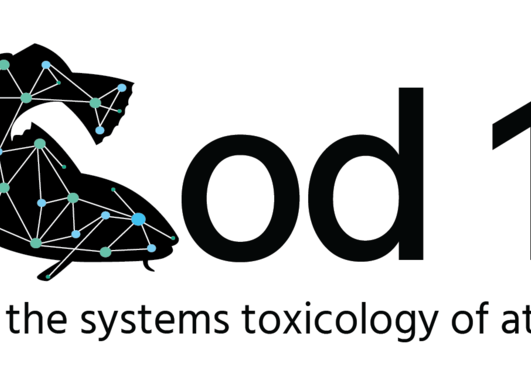Marta Eide
- E-mailmarta.eide@uib.no
- Phone+47 55 58 44 24+47 416 83 527
- Visitor AddressHaakon Sheteligs plass 7
- Postal AddressPostboks 78085020 Bergen
Academic director of the research support group, as part of the Section for Education and Research Support. Responsible for the development, operation and profiling of research support services at the University Library. Part of UiB working groups, including working group for research data, BOA-team, and UiB Ferd.
I previously held a position as senior adviser in the 'Data and models' activities in Centre for Digital Life Norway, DLN2.0.
My background is in molecular biology and environmental toxicology from the University of Bergen. As post doc and project coordinator of the dCod 1.0 project, I studied how environmental contaminants effect Atlantic cod through molecular targets, and how such targets can be identified in the genome.
In the Instagram profile @marta_forskar, I have shared illustrated insigts into environmental toxicology, biotechnology, and life in akademia. This work was supported by the Centre for Digital Life Norway.
- (2023). Integrative omics-analysis of lipid metabolism regulation by peroxisome proliferator-activated receptor a and b agonists in male Atlantic cod. Frontiers in Physiology. 17 pages.
- (2021). The chemical defensome of five model teleost fish. Scientific Reports. 1-13.
- (2020). ReCodLiver0.9: Overcoming Challenges in Genome-Scale Metabolic Reconstruction of a Non-model Species. Frontiers in Molecular Biosciences. 10 pages.
- (2018). RNA-Seq analysis of transcriptome responses in Atlantic cod (Gadus morhua) precision-cut liver slices exposed to benzo[a]pyrene and 17α-ethynylestradiol. Aquatic Toxicology. 174-186.
- (2018). Independent losses of a xenobiotic receptor across teleost evolution. Scientific Reports. 1-13.
- (2016). Single and mixture effects of aquatic micropollutants studied in precision-cut liver slices of Atlantic cod (Gadus morhua). Aquatic Toxicology. 395-404.
- (2014). Precision-cut liver slices of Atlantic cod (Gadus morhua): An in vitro system for studying the effects of environmental contaminants. Aquatic Toxicology. 110-115.
- (2014). Liver transcriptome analysis of Atlantic cod (Gadus morhua) exposed to PCB 153 indicates effects on cell cycle regulation and lipid metabolism. BMC Genomics.
- (2014). A characterization of the ZFL cell line and primary hepatocytes as in vitro liver cell models for the zebrafish (Danio rerio). Aquatic Toxicology. 7-17.
- (2022). Complex mixture and omics responses in Atlantic cod: a time- and dose-response study.
- (2019). Chemical warfare in the marine environment.
- (2019). A draft metabolic reconstruction of Atlantic cod (Gadus morhua) liver: how to and what for?
- (2023). Toxicogenomics using precision-cut liver slice culture in fish .
- (2023). Toxicogenomics using precision-cut liver slice culture in fish.
- (2020). A multi-omics approach to study Ppar-mediated regulation of lipid metabolism in Atlantic cod (Gadus morhua).
- (2019). dCOD 1.0: DECODING THE SYSTEMS TOXICOLOGY OF ATLANTIC COD (GADUS MORHUA) – HIGHLIGHTS SO FAR.
- (2019). Toxicogenomic responses in Atlantic cod (Gadus morhua) after treatment with selected environmental contaminants in vivo and ex vivo.
- (2019). The chemical defensome of Atlantic cod (Gadus morhua).
- (2019). EFFECTS OF SELECTED ENVIRONMENTAL ESTROGENS ON EXPRESSION OF FIBROBLAST GROWTH FACTOR SIGNALING PATHWAY GENES IN THE LIVER OF ATLANTIC COD (GADUS MORHUA) IN VIVO AND EX VIVO.
- (2018). dCOD 1.0: DECODING THE SYSTEMS TOXICOLOGY OF ATLANTIC COD (GADUS MORHUA).
- (2018). The nuclear receptor complement of Atlantic cod (Gadus morhua) as potential targets for endocrine disrupting compounds.
- (2018). RNA-seq analysis of transcriptome responses in Atlantic cod (Gadus morhua) precision cut liver slices exposed to benzo[a]pyrene and 17α-ethynylestradiol.
- (2018). RNA-seq analysis of transcriptome responses in Atlantic cod (Gadus morhua) precision cut liver slices exposed to benzo[a]pyrene and 17α-ethynylestradiol.
- (2018). Modelling the chemical defensome networks --- a dynamic visualisation of the involved genes and interactions in two fish species and human.
- (2018). Modelling the chemical defensome network - a dynamic visualisation of the involved genes and pathways in two fish species and humans .
- (2018). Modelling The Chemical Defensome Networks - A Comparative Dynamic Visualisation Of The Involved Genes And Interactions In Two Fish Species And Humans.
- (2018). Ecotoxicological responses in Atlantic cod (Gadus morhua) after caging at a capped waste disposal site in Kollevåg, Western Norway .
- (2018). Ecotoxicological responses in Atlantic cod (Gadus morhua) after caging at a capped waste disposal site in Kollevåg, Western Norway .
- (2018). Discovering pathway perturbations with topological edge set enrichment analysis (TESEA).
- (2018). Adverse health effects related to chemical exposure in Atlantic cod (Gadus morhua) from Norwegian fjords.
- (2017). PRECISION-CUT LIVER SLICES (PCLS) FOR TOXICOGENOMIC STUDIES IN ATLANTIC COD (Gadus morhua): THE dCOD 1.0 PROJECT.
- (2017). Integrative transcriptome and proteome analysis reveals perturbation of lipid metabolic pathways in the liver of Atlantic cod (Gadus morhua) treated with PCB 153.
- (2017). CHARACTERIZATION OF THE ARYL HYDROCARBON RECEPTORS AHR1B AND AHR2 IN ATLANTIC COD (GADUS MORHUA).
- (2016). Toxicogenomics as a tool for understanding responses to pollutants in organisms: Using Atlantic cod (Gadus morhua) and a systems biology approach to environmental toxicology.
- (2016). Integrative -omics analyses reveal perturbation of lipid metabolic pathways in the liver of Atlantic cod (Gadus morhua) exposed to the persistent organic pollutant PCB 153.
- (2016). Chemical warfare in the marine environment: genomic survey of the Atlantic cod (Gadus morhua) defensome reveals the absence of an important xenosensor.
- (2021). Slik kan Forskingsrådet sørge for meir deling av forskingsdata. Khrono.no.
- (2021). Slik kan Forskingsrådet sørge for meir deling av forskingsdata. Khrono.no.
- (2018). Torsken manglar eit viktig gen i forsvaret mot miljøgifter. Forskning.no.
- (2016). Experimental systems for studying toxicological responses in teleost species. In vitro, ex vivo and in silico studies of zebrafish (Danio rerio) and Atlantic cod (Gadus morhua).
- (2020). Intervjua på NRK Nyhetsmorgen i samband med Instagram-kontoen @Marta_forskar.
- (2019). Forskarar bura torsken inne for å studere effektane av miljøgifter.
- (2012). Integrative environmental genomics of cod (Gadus morhua) reveal the mechanisms underlying MeHg- and PCB153 induced toxicity. Comparative Biochemistry and Physiology A. S49-S49.
- (2019). dCOD 1.0: DECODING THE SYSTEMS TOXICOLOGY OF ATLANTIC COD (GADUS MORHUA) – HIGHLIGHTS SO FAR.
- (2019). THE CHEMICAL DEFENSOME OF ATLANTIC COD (GADUS MORHUA): HOW DOES IT DIFFER FROM DEFENSOME NETWORKS IN OTHER TELEOST SPECIES?
- (2019). Chemical warfare in the aquatic environment - The chemical defensome networks of model fish species.
- (2019). A draft metabolic reconstruction of Atlantic cod (Gadus morhua) liver .
- (2018). MODELLING THE CHEMICAL DEFENSOME NETWORKS - a comparative visualisation of the defense genes and interactions in two fish species and human.
- (2017). dCod 1.0: decoding the systems toxicology of Atlantic cod (Gadus morhua).
- (2017). dCod 1.0: decoding the systems toxicology of Atlantic cod (Gadus morhua) - WP8: biomarkers and xenosensors.
- (2017). dCod 1.0: decoding the systems toxicology of Atlantic cod (Gadus morhua) - WP8: biomarkers and xenosensors.
- (2017). dCod 1.0 decoding the systems toxicology of Atlantic cod.
- (2017). Using precision-cut liver slices (PCLS) and luciferase reporter gene assays to characterise the aryl hydrocarbon receptors (Ahr) in Atlantic cod (Gadus morhua).
- (2017). Using precision-cut liver slices (PCLS) and luciferase reporter gene assays to characterise the aryl hydrocarbon receptors (Ahr) in Atlantic cod (Gadus morhua).
- (2017). Using precision-cut liver slices (PCLS) and luciferase reporter gene assays to characterise the aryl hydrocarbon receptors (Ahr) in Atlantic cod (Gadus morhua).
- (2017). Ecotoxicological responses in Atlantic cod (Gadus morhua) following caging near a previously capped waste disposal site in Kollevågen, Askøy, Norway .
- (2017). Ecotoxicological responses in Atlantic cod (Gadus morhua) following caging near a previously capped waste disposal site in Kollevågen, Askøy, Norway .
- (2017). Ecotoxicological responses in Atlantic cod (Gadus morhua) following caging near a previously capped waste disposal site in Kollevågen, Askøy, Norway .
- (2016). Using precision-cut liver slices (PCLS) and luciferase reporter gene assay to characterize the aryl hydrocarbon receptors (Ahr) in Atlantic cod (Gadus morhua).
- (2016). Systems Toxicology Studies to Investigate Mechanisms of Toxicity of Environmental Chemicals Using Atlantic cod (Gadus morhua) as a Model Organism.
- (2016). Integrated analysis of transcriptome and proteome reveals perturbation of lipid metabolic pathways in the liver of Atlantic cod (Gadus morhua) treated with the persistent organic pollutant PCB 153 .
- (2016). Effektar på lipidmetabolismen til atlanterhavstorsk (Gadus morhua) etter eksponering mot enkeltsambindingar og blandingar av miljøgiftar.
- (2012). Integrative environmental genomics of Atlantic cod (Gadus morhua): exposure of cod liver slices to environmental contaminants.
More information in national current research information system (CRIStin)


